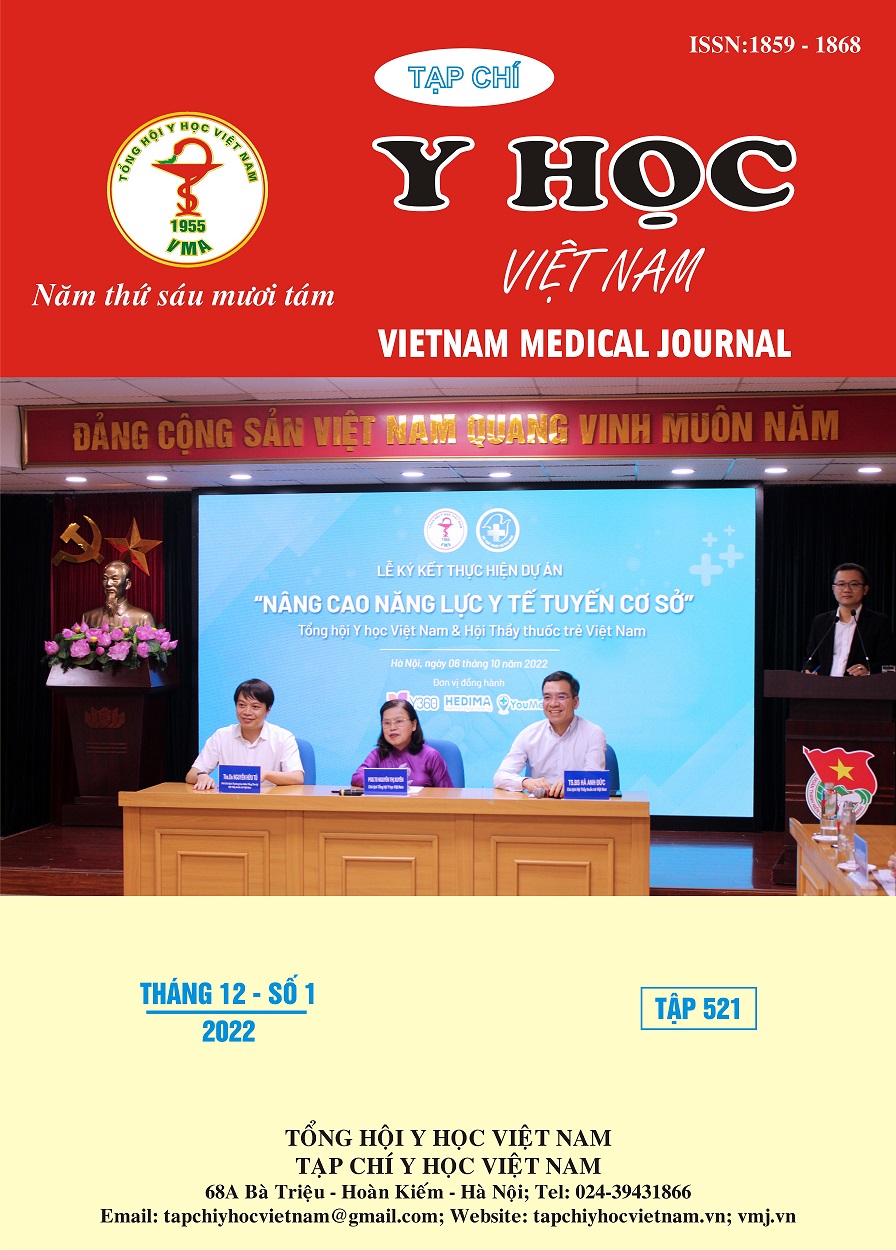RELATIONSHIP BETWEEN ASTHMA SYMPTOM CONTROL AND TECHNIQUE USING THE TURBUHALER AT ASTHMA PATIENTS
Main Article Content
Abstract
Objectives: Inhalation technique plays a very important role in asthma treatment and is related to disease control. The study aimed to determine the proportion of asthmatic patients using the Turbuhaler device (AstraZeneca) improperly and to find the relationship between asthma symptom control and improper steps of using Turbuhaler. Subjects and methods: Cross-sectional study on 200 outpatient asthma patients using Turbuhaler. All patients were assessed for asthma control according to GINA 2021 and ACT scores. Turbuhaler usage is evaluated according to a 9-step checklist and whistle device. Results: The rate of incorrect use of the Turbuhaler was 74.0% and the rate of incorrect at least one essential step was 37.5%. Improper use of Turbuhaler increased the risk of poor asthma symptom control according to GINA (adjusted OR=3.30; 95% CI 1.50-7.30; p=0.003) and the ACT scale (adjusted OR =1.43; 95% CI 1.11-1.84; p=0.006). Failure to hold breath for at least 5 seconds after inhalation was the only error independently associated with poorer asthma symptom control according to GINA (adjusted OR=2.24; 95% CI 1.10-4.58; p= 0.027). Conclusion: The incorrect technique of using Turbuhaler in asthmatic patients accounts for a high proportion and is independently associated with poor asthma symptom control.
Article Details
Keywords
Level of asthma symptom control, inhaler technique, dry powder inhaler, Turbuhaler
References
2. Trần Thúy Hạnh, Nguyễn Văn Đoàn (2012). Dịch tễ học và tình hình kiểm soát hen phế quản ở người trưởng thành Việt Nam. Tạp chí Y học Lâm sàng, 65 tr. 46-50.
3. Al-Jahdali H, et al (2013). Improper inhaler technique is associated with poor asthma control and frequent emergency department visits. Allergy Asthma Clin Immunol, 9 (1), pp: 8.
4. Plaza V, Fernández-Rodríguez C, Melero C, Cosío BG, Entrenas LM, de Llano LP, Gutiérrez-Pereyra F, Tarragona E, Palomino R, López-Viña A; TAI Study Group (2016). Validation of the 'Test of the Adherence to Inhalers' (TAI) for Asthma and COPD Patients. J Aerosol Med Pulm Drug 29(2):142-52.
5. Van der Palen J, Klein J J, Schildkamp A M (1998). Comparison of a new multidose powder inhaler (Diskus/Accuhaler) and the Turbuhaler regarding preference and ease of use. J Asthma. 35 (2), pp: 147-152.
6. Maher R Khdour, Sabrin O Elyan, Hussein O Hallak, Anan S Jarab, Tareq L Mukattash, Amr Astal (2019). Assessment of the inhalation technique and adherence to therapy and their effect on disease control in outpatients with asthma, J Pharm H Serv Res, Vol 10, Is 3, pp 353–358.
7. Koya T, Hasegawa T, Takasawa J, Yoshimine F, Sakagami T, Hayashi M, Suzuki E, Kikuchi T; Niigata Inhalation Treatment Study Group (2018). Influence of Adherence to Inhaled Corticosteroids and Inhaler Handling Errors on Asthma Control in a Japanese Population. Intern Med. 2018 Dec 1;57(23):3357-3363.
8. Horváth A, Balásházy I, Tomisa G, et al (2017). Significance of breath-hold time in dry powder aerosol drug therapy of COPD patients. Eur J Pharm Sci, 104 pp. 145-149.


